
|   |

|   |
Satkara Foundation's Sukhanubhuti - Manjari Sinha e-mail: manjari@sinha.com August 3, 2023 It was a rare opportunity for Delhi dance lovers to watch Satkar Foundation's 'Sukhanubhuti' (feeling of happiness) presented in 'Ankiya Bhaona' style Sattriya dance-drama at the IIC recently. Ankiya Bhaona is a stylized Sattriya musical drama, showcasing Assamese heritage and culture. As an outcome of the Bhakti movement, it was spearheaded by the Vaishnava visionary saint and social reformer Srimanta Sankaradeva during the 15th/16th century, to spread the philosophy and moral values in mankind. Along with the ritualistic music and dance practiced in the Sattras of Assam, he also created Ankiya Bhaona, Nritya Natikas or musical plays to inculcate moral values through the portrayal of mythological stories. The occasion was the 10th anniversary celebration of the Satkara Foundation, founded by the brilliant Sattriya exponent and teacher Meenakshi Medhi. With her passion to propagate Sattriya culture, Meenakshi Medhi established Satkara in Guwahati in 2013. Unleashing the spirit of Sattriya, Satkara continued in Delhi from 2021 onwards. The Satkara Foundation has completed a decade of its arduous journey striving towards its goal of popularizing Sattriya culture comprising Sattriya dance, Borgeet (devotional lyrics), Khol, the percussion instrument, Ankiya Bhaona (musical drama) and mask preparation et al. Satkara Foundation organizes festivals, workshops, and lecture demonstrations on a regular basis. It also runs Sattriya Nrityashala, a Sattriya dance school in Delhi NCR where Meenakshi grooms learners from home and abroad through online and offline classes. She also provides training to underprivileged children at the Centre for Social Change, Noida. 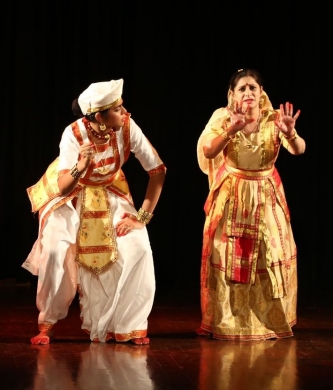
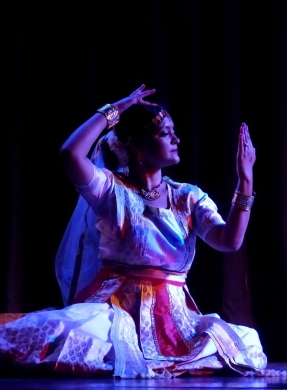
Trained in Sattriya under veteran Gurus like Late Adhyapak Jibanjit Dutta and Adhyapak Haricharan Bhuyan, Meenakshi holds a national scholarship awarded by the Ministry of Culture and also the Junior Fellowship from the Centre for Cultural Resources and Training - CCRT. An acclaimed solo performer, Meenakshi has showcased her art at major dance festivals, but this evening the Satkar Foundation brought together an ensemble to spread the feeling of happiness through 'Sukhanubhuti', with an hour-long dance-drama production, 'The Ethereal Ties: A Dance Journey Through Parent-Child Stories.' Featuring a number of parent-child stories, it underlined the ethos of the Sanskrit shloka "Sarva teerthamayi Mata, Sarva devamayah Pita / Mataram Pitaram tasmaat, Sarva yatnena poojayet", that translates - "The mother embodies all pilgrimages, the father embodies all deities; hence the worship of one's parents remains the vital duty of all!" The play explored the core of creation and the code of conduct for humans through stories from ancient scriptures. These engaging vignettes brought out the essence of filial piety and how this love and sense of loyalty to the bloodline originated and has been carried through the previous Yugas. Opening with the concept of Nirakar and Sakar, the play explains when there was nothing, there was this ethereal void called 'Hiranyagarbha'! The hymn of Rigveda says, "Hiranyagarbhah samavartataagre, bhutasya jatasya patireka aasit." This Hiranyagarbha was the Nirakara Brahman which in its nothingness holds everything. The play goes on to depict the origin of this cosmos from Nirakar to Sakar. From Nirakar Brahma's cosmic womb springs forth Purush, called Adi Niranjan, which is the internal consciousness. He was the silent spectator who wanted to perform divine leela of Srishti, Sthiti, and Laya. From him springs out Prakriti, called Mahamaya, the dormant force. 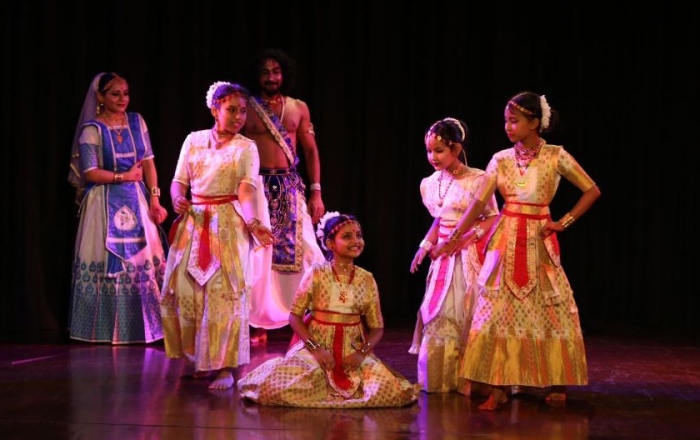 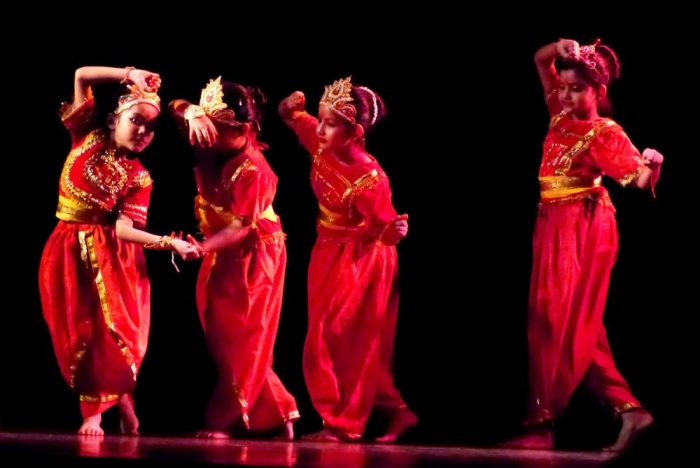 Both Purusha and Prakriti engage in their divine dance uniting the dynamic and dormant, the matter and energy, and thus animates the universe, the Sakar visible 'Jagat' with the three Gunas - Sat, Rajas, and Tamas. Adi Niranjan and Mahamaya breathe life into this world permeating through everything they created. Partha Pratim Hazarika as Adi Niranjan (Purush) and Meenakshi as Mahamaya (Prakriti) were convincing in their challenging roles of breathing life that permeates through everything created by them with the divine spark. The element of Adi Niranjan, the Purush signifies the Pita, and the element of Mahamaya, the Prakriti, becomes Mata, who nurture us, cares for us. The moral of the play was to underline our duty to take care of our parents. Performing this duty elevated to higher reaches of Swarga (heaven) and the guilt of ignoring the duties degrades us to Narak (hell). This concept was carried through the stories of Shravan Kumar, Shri Ramachandra, and Savitri-Satyavan with their acts of service and sacrifice.  Perrine Legoullon as sutradhar Meenakshi very thoughtfully engaged even the younger students of her nrityashala as the children of the Adi Dampati and also used the Assamese masks quite creatively. Along with Meenakshi and Partha Pratim Hazarika as the Adi Dampati the original couple / parents, the remarkable role of Sutradhar was played by Perrine Legoullon; the other cast included Papul Saikia, Rekha Paladee, N.H. Rajesh, Shreya Sinha, Anuradha Kaushik, Krishna Baruah, Manannya Rishit, Aaditya Kumar, Deevanita Das, Aditri Gogoi and Reeyanshin Pal. Script by Rak Krishna Mohanta, design, direction, and choreography by Meenakshi Medhi, music by Bhaskar Jyoti Ojah, costume designe by Nabanita Medhi, creative inputs from Raakesh Medhi, and the overall guidance from Adhyapak Haricharan Buyan Borbayan saw to it that the production maintains the desired status and doesn't look like a school level show. 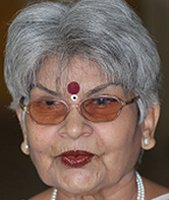 Manjari Sinha has an M.A. in Sanskrit and Music, and trained in vocal, tabla, sitar and Kathak dance. She has regular columns in national dailies as a music and dance critic. |